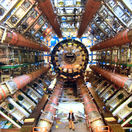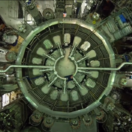The construction of the largest nuclear fusion reactor ITER has been completed, but its operation will not begin until 2039. TASR informed about this based on the Live Science server report.
Photo: SITA/AP, Daniel Cole
The ITER fusion nuclear reactor in a picture from 2021.
The ITER (International Fusion Energy Project) fusion reactor is of the tokamak type and consists of 19 massive coils. Its first test was originally planned for 2020, but now scientists are citing 2039 as the earliest date for commissioning. The reason for the delay is a massive increase in costs. The initial budget of the project was five billion US dollars, but later it increased sharply to more than 22 billion dollars. An additional five billion US dollars was included in the budget as a reserve to cover additional possible costs.
ITER is a joint project of 35 countries of the world. In addition to all 27 EU countries, Russia, China, India and the USA also take part in it. The reactor is capable of creating a magnetic field 280,000 times stronger than Earth’s magnetic field.

Such strong magnetic fields maintain the super-hot plasma required for nuclear fusion inside the reactor. Plasma is one of the four basic states of matter, it consists of positively charged ions and free electrons with a negative charge.
A number of conditions must be met to trigger a merger. Fusion inside stars takes place at an extremely high temperature. The temperature is 15 million degrees Celsius, the pressure is approximately 340 billion times higher than the atmospheric pressure at sea level. However, reaching such a pressure is practically impossible on Earth, so the reaction must take place at a significantly lower pressure.

Heating the plasma to the desired temperature is relatively simple, writes Live Science. A technically demanding step is to keep it inside the reactor without burning through its walls or otherwise disrupting the reaction. Therefore, strong magnetic fields or lasers are used for this purpose.
Scientists have been trying to master nuclear fusion since the 1970s, because by fusing hydrogen nuclei into helium, they would be able to obtain a huge amount of energy without creating waste products or radioactive waste. So far, however, they are unable to extract more energy from the reaction than they put in, and further research is needed to reverse this.
Source: vat.pravda.sk


